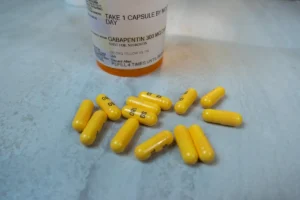Are you or a loved one grappling with opiate withdrawal and looking for relief? Withdrawal symptoms can be intensely challenging while recovering. But there’s hope, which might come from an unexpected medication: Gabapentin.
In this blog, we’ll dive into how Gabapentin, commonly used to treat nerve pain and seizures, is also helping many cope with the tough journey of opiate withdrawal. We’ll explore its effectiveness, how it compares to other treatments, and what you should know about using it safely. Whether you’re just starting your recovery journey or seeking new options, this guide will provide valuable insights into managing withdrawal symptoms effectively with Gabapentin. Let’s explore this option together and take a step closer to recovery.
Contents
Understanding Gabapentin and Its Uses
 Gabapentin, commonly known by its brand name Neurontin, is a medication initially developed to treat epilepsy. Over the years, its scope has broadened significantly due to its efficacy in managing several other conditions. Here’s a closer look at the typical and off-label uses of Gabapentin.
Gabapentin, commonly known by its brand name Neurontin, is a medication initially developed to treat epilepsy. Over the years, its scope has broadened significantly due to its efficacy in managing several other conditions. Here’s a closer look at the typical and off-label uses of Gabapentin.
- Treatment of Nerve Pain: It works by calming down nerves that have become overactive due to damage, thereby reducing pain.
- Seizure Control: It helps stabilize electrical activity in the brain and prevent the rapid firing of neurons that can lead to seizures.
Aside from its primary uses, Gabapentin is increasingly being recognized for its effectiveness in treating opiate withdrawal symptoms. Although this is an off-label use, many healthcare providers prescribe it to help manage the discomfort associated with withdrawal.
How Gabapentin Can Help with Opiate Withdrawal?
 Gabapentin, while not primarily designed for opiate withdrawal, has shown promise in easing the process. Understanding how it works can help individuals and healthcare providers consider it as part of a comprehensive withdrawal management plan.
Gabapentin, while not primarily designed for opiate withdrawal, has shown promise in easing the process. Understanding how it works can help individuals and healthcare providers consider it as part of a comprehensive withdrawal management plan.
- Gabapentin works by interacting with voltage-gated calcium channels in the nervous system, particularly those located on neurons that are involved in pain signaling and mood regulation.
- By modulating these channels, Gabapentin reduces the release of several neurotransmitters, including glutamate, norepinephrine, and substance P, which are often associated with pain and mood swings.
Alleviating Opiate Withdrawal Symptoms
During opiate withdrawal, the nervous system can become hyperactive, leading to a range of symptoms that make the withdrawal process particularly uncomfortable and challenging. Gabapentin’s ability to stabilize the activity of neurotransmitters plays a crucial role in alleviating these symptoms:
- Reduction of Anxiety and Stress
- Managing Sleep Problems
- Controlling Muscle Cramps and Pain
Dosage and Administration for Opiate Withdrawal
Here’s how Gabapomentin is typically administered for this purpose:
Initial Dosage
- Typically, treatment starts at a lower dose to minimize side effects, often around 300 mg to 600 mg per day.
- Depending on the patient’s response and the presence of side effects, the dose may be gradually increased.
Maintenance Dosage
- The maintenance dose can range from 900 mg to 1800 mg daily, divided into three doses. This dosage can effectively reduce withdrawal symptoms without significant sedation or other side effects.
